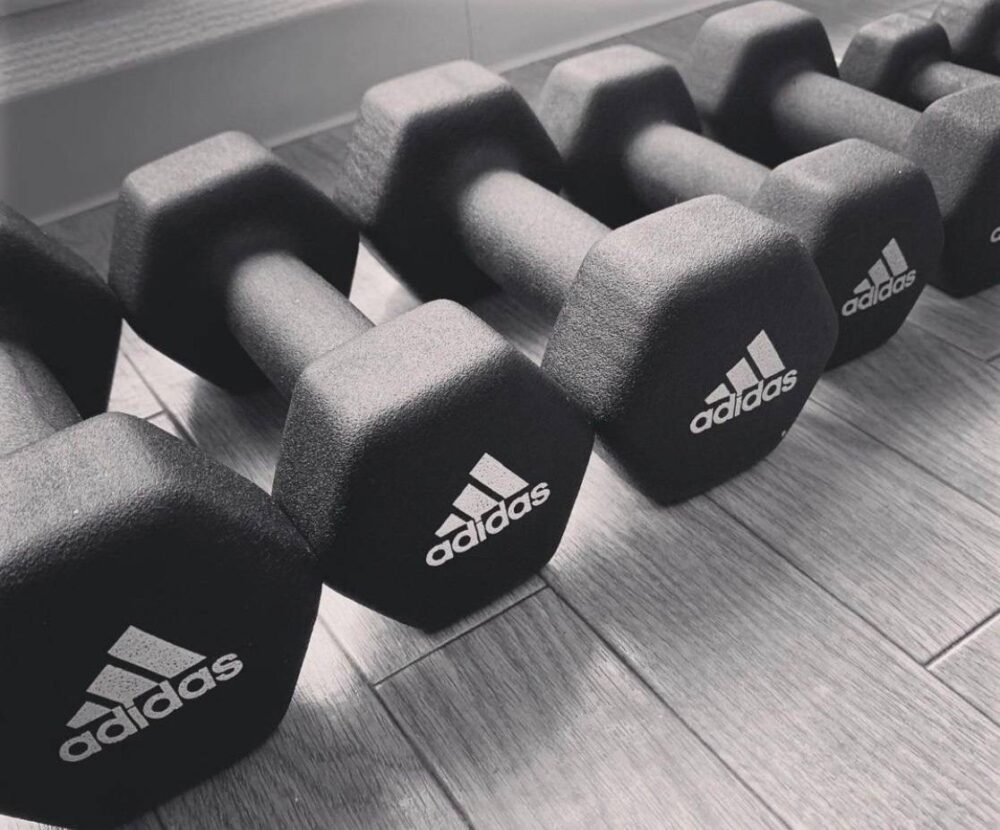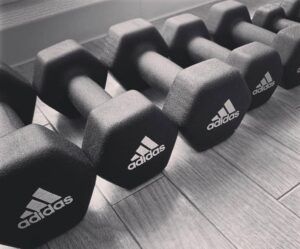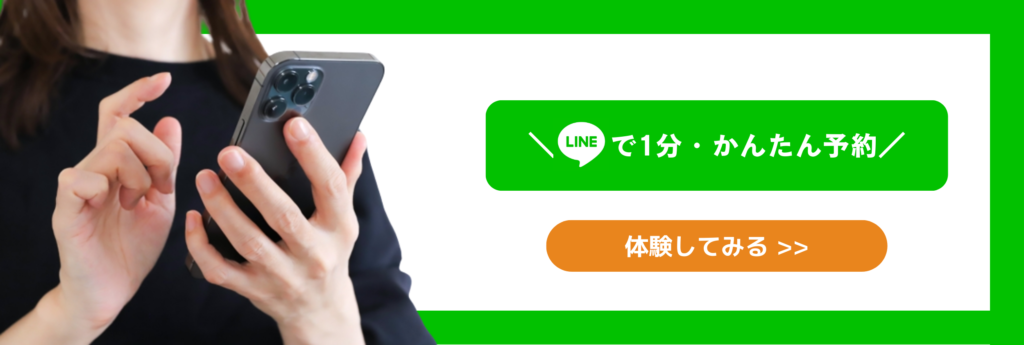「なんだか最近、些細なことで体の節々が気になる…」「将来、自分の足で元気に歩き続けられるだろうか?」
大阪梅田のパーソナルトレーニングスタジオHearts227で、日々多くのお客様と向き合っていると、こうした漠然とした将来への不安を耳にすることが少なくありません。特に40代を過ぎると、体力や見た目の変化だけでなく、体の内部、つまり「骨」の健康についても意識し始める方が増えてきます。
こんにちは、パーソナル加圧トレーニング&丹田スタジオHearts227代表の戸村能久です。私はこれまで数多くの方々の体づくりをサポートしてきましたが、多くの方が筋肉と同じくらい、いえ、それ以上に「骨の健康」が重要であるという事実を見過ごしがちです。
骨は単なる体を支えるフレームではありません。あなたの10年後、20年後の活動的な生活を支える、まさに「命の器」です。しかし、骨密度は20代をピークに静かに、そして確実に減少していきます。この見えない危機に気づかず、知らず知らずのうちに骨を弱らせる生活を送っているとしたら…非常にもったいないことです。
この記事では、単に「骨に悪い食べ物」をリストアップするだけではありません。なぜそれらが悪いのかという理由、そして私たちプロが実践している具体的な対策、さらには私のスタジオ独自のメソッドである「加圧トレーニング」と「丹田」が、いかにあなたの骨を未来へと繋ぐ強固なものにしていくか、という点まで深く掘り下げて解説します。未来の自分への最高の投資、「骨貯金」を今日から始めてみませんか?

骨の健康を見過ごすことの本当の怖さとは?
多くの方が骨の問題を「遠い未来の話」や「高齢者だけの問題」だと思いがちです。しかし、それは大きな誤解です。骨の健康は、今この瞬間からあなたの将来の生活の質(QOL)を左右する、非常に重要な健康指標なのです。
骨が弱くなる、いわゆる「骨粗鬆症(こつそしょうしょう)」は、自覚症状がないまま進行する「サイレント・キラー」とも呼ばれます。骨がスカスカになり、もろくなってしまうことで、くしゃみや少しつまずいただけといった些細な衝撃で骨折してしまうリスクが飛躍的に高まります。特に、脚の付け根(大腿骨頸部)や背骨(椎体)の骨折は、寝たきりや要介護状態に直結する深刻な事態を引き起こす可能性があります。
下のグラフをご覧ください。これは男女の年齢による骨量の変化を示したものです。
グラフ:年齢と骨量の変化
(縦軸:骨量 / 横軸:年齢)
・女性の線は20歳頃にピークを迎え、50歳前後(閉経期)から急激に下降する。
・男性の線も20歳頃にピークを迎え、その後は女性より緩やかに下降する。

(グラフの視覚的表現)
ご覧の通り、特に女性は閉経期を迎える50歳前後から、女性ホルモン(エストロゲン)の減少に伴い、骨量が急速に減少します。この急降下に備えるためには、骨量が最大になる20代まで、そして緩やかに減少し始める30代、40代のうちに、いかに高い「骨の貯金」を築いておけるかが勝負の分かれ目となります。だからこそ、まだ大丈夫と思っている「今」から対策を始めることが何よりも重要なのです。
あなたもやってるかも?骨の貯金を食いつぶす4つのNG食習慣
健康のために良かれと思って続けている食事が、実は骨のカルシウムを静かに奪っているとしたら…。ここでは、多くの方が無意識に陥ってしまっている、骨を弱らせる可能性のある4つの食習慣について、その理由と共に詳しく解説します。
1. 「とりあえず減塩」では不十分!濃い味付けが招くカルシウムの流出
健康診断などで「塩分を控えめに」と言われ、気にしている方は多いでしょう。しかし、その本当の理由、特に骨への影響まで理解している方は少ないかもしれません。
塩分の主成分であるナトリウムを過剰に摂取すると、私たちの体はバランスを保つために、余分なナトリウムを尿として体外に排出しようとします。問題は、この時にカルシウムも一緒に排出されてしまう点です。つまり、塩辛いものを食べれば食べるほど、体内の貴重なカルシウムが、意図せずして失われていくのです。
例えば、ランチで食べるラーメンのスープを全部飲み干したり、お漬物や加工肉を頻繁に食卓に並べたりしていませんか?こうした食事は、あなたが思っている以上に多くの塩分を含んでいます。出汁の旨味や香辛料、柑橘類の酸味などを上手に使うことで、塩分を抑えながらも満足感のある食事は十分に可能です。今日から「味付け」を見直すことが、骨を守る第一歩となります。
2. 便利さの裏に潜む罠。加工食品に含まれる「リン」の過剰摂取
インスタント食品やスナック菓子、清涼飲料水などは、忙しい現代人の生活に欠かせないものかもしれません。しかし、これらの加工食品の多くには、保存性や食感を良くするために「リン」というミネラルが添加物として多く使われています。
リンは骨や歯を作るために必要な栄養素ですが、問題はそのバランスです。血液中のリン濃度がカルシウム濃度を上回ると、体はバランスを取ろうとして骨を溶かし、カルシウムを血液中に放出してしまいます。その結果、骨密度が低下してしまうのです。
肉や魚などの自然な食品に含まれる「有機リン」は吸収率が穏やかですが、添加物として使われる「無機リン」は非常に吸収率が高いため、特に注意が必要です。原材料表示を見て「リン酸塩」という文字があれば、それは無機リンです。完全に断つのは難しいかもしれませんが、加工食品に頼る頻度を減らし、食材そのものの味を活かした手作りの食事を心がけることが、骨の健康には不可欠です。
3. リラックスタイムの定番、コーヒーやお茶の飲み過ぎに注意
仕事の合間や食後の一杯に、コーヒーや紅茶、緑茶は欠かせないという方も多いでしょう。これらに含まれる「カフェイン」には、覚醒作用や集中力を高めるなど良い面もありますが、骨にとっては少し注意が必要です。
カフェインには利尿作用があり、ナトリウムと同様にカルシウムの尿中への排泄を促進する働きがあります。また、胃腸からのカルシウムの吸収をわずかに阻害するという側面も持っています。もちろん、1日に1〜2杯程度を楽しむ分には大きな問題はありません。しかし、水を飲む代わりにコーヒーや緑茶をガブガブと飲んでいるような方は、見直しが必要です。
特に、空腹時に濃いコーヒーを飲む習慣は避けたいところです。飲むタイミングを食後にしたり、カフェインの少ないハーブティーを選んだり、あるいはシンプルに「水」を飲む習慣をつけたりするなど、少しの工夫でカルシウムの流出を防ぐことができます。
4. 「百薬の長」は本当?アルコールが骨に与える複合的なダメージ
「酒は百薬の長」と言われることもありますが、骨の健康に関しては、残念ながらその言葉は当てはまりません。アルコールの過剰摂取は、複数の側面から骨にダメージを与えます。
まず、アルコール自体がカルシウムの吸収を妨げ、尿からの排泄を促します。さらに、骨の形成に不可欠なビタミンDの働きを肝臓で阻害してしまうため、新しい骨が作られにくくなるのです。長期間にわたる過度な飲酒は、骨を作る細胞(骨芽細胞)の働きを直接的に弱めるという報告もあります。
また、飲み過ぎは栄養バランスの乱れや、転倒による骨折のリスクを高めることにも繋がります。適量を守るのはもちろんですが、休肝日を設ける、飲む量を管理するなど、賢いお酒との付き合い方を身につけることが、未来の骨折リスクを減らすために重要です。
【Hearts227独自理論】骨密度を高める究極のメソッド「加圧トレーニング×丹田」
食事に気をつけることは、いわば「守りの骨活」です。しかし、本気で骨を強くし、骨密度を高めていくには、骨に直接刺激を与える「攻めの骨活」、つまり運動が不可欠です。そして、その効果を最大化するのが、私のスタジオが専門とする「加圧トレーニング」と「丹田」を意識したアプローチです。
なぜ「加圧トレーニング」が骨に良いのか?
骨は、衝撃や負荷といった物理的な刺激が加わることで、その刺激に負けないように自らを強くしようとする性質があります(ウォルフの法則)。そのため、骨密度を高めるには、ある程度の負荷をかけたトレーニングが効果的です。しかし、体力に自信のない方や高齢の方が、いきなり高重量のウエイトトレーニングを行うのは、怪我のリスクも高く現実的ではありません。
ここで「加圧トレーニング」が真価を発揮します。加圧トレーニングとは、腕や脚の付け根に専用のベルトを巻き、適切に血流を制限した状態で行うトレーニングです。最大の特徴は、極めて軽い負荷でも、高重量のトレーニングを行ったのと同等の効果が得られる点にあります。
その秘密は「成長ホルモン」の大量分泌にあります。加圧トレーニングを行うと、トレーニング中に腕や脚に乳酸などの代謝物が溜まり、脳が「非常にきついトレーニングを行っている」と錯覚します。その結果、体を修復・成長させるために、安静時の数百倍もの成長ホルモンが分泌されるのです。
この成長ホルモンは、筋肉を育てるだけでなく、骨の代謝を活発にし、骨を作る「骨芽細胞」の働きを強力にサポートします。つまり、加圧トレーニングは、関節に負担をかけることなく、安全かつ効率的に骨を強くするための理想的な環境を体内に作り出すことができるのです。
実際に私のスタジオでも、骨密度の数値を気にされている50代、60代の女性クライアント様が、加圧トレーニングを継続することで、数値の維持・改善を実感されています。何より、「軽い重りなのに、しっかりと効いている感じがする」「トレーニング後の体の変化が分かりやすい」といった喜びの声をいただくことが、このメソッドの有効性を物語っています。
転ばぬ先の杖、「丹田」を鍛えて骨折リスクを根絶する
いくら骨を強くしても、転んで強く打ち付けてしまっては骨折は避けられません。特に高齢者の骨折は「転倒」が最大の原因です。そこで重要になるのが、体の中心軸を安定させ、バランス能力を高める「丹田」の意識です。
丹田とは、おへその下あたりに位置する、古来から武道などで重視されてきた体の中心点です。私たちは、この丹田を意識した呼吸法や体幹トレーニングを通じて、体の深層部にあるインナーマッスルを活性化させます。
丹田が安定すると、体の軸が一本スッと通ったようになり、歩行時のふらつきが減少します。電車の揺れや、人混みの中で軽く押された時など、日常の不意なバランスの崩れにも、スッと体勢を立て直すことができるようになります。これは、単に足腰の筋力を鍛えるだけでは得られない、全身の連動性に基づいた「真の安定性」です。
加圧トレーニングで骨そのものを強くし、丹田トレーニングで転倒しない安定した体を作る。この**「強化」と「防御」の二つのアプローチを組み合わせること**で、将来の骨折リスクを限りなくゼロに近づけることができる。これが、Hearts227が提供する独自の価値であり、私が最も自信を持ってお勧めする骨活メソッドなのです。
まとめ:あなたの未来は、今日の「骨」への意識で変わる
これまで、骨の健康を脅かす食習慣から、骨を積極的に強くするための独自トレーニングメソッドまでお話ししてきました。
- 骨の健康は、症状が出てからでは遅い。40代からの「骨貯金」が将来の生活の質を決める。
- 塩分、加工食品(リン)、カフェイン、アルコールの過剰摂取は、知らずに骨を弱らせるNG習慣。
- 軽い負荷で成長ホルモンを大量分泌させる「加圧トレーニング」は、安全かつ効率的に骨を強くする攻めの骨活。
- 体の中心軸「丹田」を鍛えることで、骨折の最大原因である転倒そのものを防ぐ。
私たちの体は、あなたが思っている以上に正直です。今日の小さな意識と行動が、10年後、20年後のあなたを確実に変えていきます。もう「歳だから」と諦める必要はありません。科学的根拠に基づいた正しいアプローチをすれば、骨は、そして体は、何歳からでも強くすることができます。
もし、あなたが本気でご自身の体と向き合い、健康で活動的な未来を手にしたいと願うなら、ぜひ一度、私たちのスタジオの扉を叩いてみてください。私、戸村能久が、あなたの「骨」と「人生」を支える最高のパートナーとして、全力でサポートさせていただきます。
パーソナル加圧トレーニング&丹田(たんでん)波動整体スタジオHearts227-ハーツニニナナ-大阪梅田店
キャンペーン
■体験トレーニング5000円Instagram、公式LINE登録で⇒3000円
■入会金⇒0円
御堂筋線中津駅徒歩1分、
阪急大阪梅田駅茶屋町口徒歩5分、
JR大阪駅徒歩9分
〒531-0072 大阪府大阪市北区豊崎5丁目7−11 アベニュー中津 403号室
営業時間 10:00~22:00
(LAST 21:00)
English Blog
[A Trainer’s Warning] Is Your Daily Drink Dissolving Your Bones? The New Rules for Bone Health from Your 40s, Taught by a Pro in Umeda, Osaka
“Lately, I’ve been feeling aches in my joints over minor things…” “Will I be able to walk strongly on my own two feet in the future?”
As I work with many clients daily at my personal training studio, Hearts227, in Umeda, Osaka, I often hear these kinds of vague anxieties about the future. This is especially true for those over 40, who are beginning to think not just about their physical strength and appearance, but also about their internal health—specifically, their bones.
Hello, I’m Tomohisa Tomura, the founder and trainer at Personal Kaatsu Training & Tanden Studio Hearts227. Throughout my career supporting countless individuals in their fitness journeys, I’ve noticed a common oversight: many people neglect the health of their bones, which is just as, if not more, important than muscle health.
Your bones are not merely a frame to support your body. They are the very “vessel of life” that will support your active lifestyle 10, 20 years from now. However, bone density peaks in our 20s and then begins a silent, yet steady, decline. Imagine if you were unknowingly living a lifestyle that weakens your bones, oblivious to this invisible crisis. It would be a profound waste.
This article will do more than just list “foods that are bad for your bones.” We will delve deeper, explaining the reasons why they are detrimental, discussing concrete countermeasures that we professionals use, and exploring how my studio’s unique methods—”Kaatsu Training” and “Tanden”—can forge your bones into a strong foundation for the future. Why not start making the best investment for your future self today by building your “bone savings”?
The True Danger of Overlooking Bone Health
Many people tend to think of bone problems as a distant issue or something that only affects the elderly. This is a significant misconception. Bone health is a critical indicator that determines your quality of life (QOL) starting from this very moment.
The weakening of bones, a condition known as osteoporosis, is often called a “silent disease” because it progresses without any noticeable symptoms. As bones become porous and brittle, the risk of fractures from minor impacts—like a sneeze or a small stumble—increases dramatically. Fractures of the hip (femoral neck) or spine (vertebrae) are particularly serious, as they can lead directly to becoming bedridden and requiring long-term care.
Take a look at the graph below. It illustrates the changes in bone mass with age for both men and women.
Graph: Changes in Bone Mass with Age
(Vertical Axis: Bone Mass / Horizontal Axis: Age)
- The line for women peaks around age 20 and declines sharply from around age 50 (menopause).
- The line for men also peaks around age 20 and then declines more gradually than for women.
(Visual representation of the graph)
As you can see, women, in particular, experience a rapid decrease in bone mass around menopause (around age 50) due to a decline in the female hormone estrogen. To prepare for this sharp drop, the key is to build as much “bone savings” as possible by the time bone mass peaks in your 20s and during your 30s and 40s when it begins its gradual decline. That is precisely why it is crucial to start taking action “now,” while you still feel fine.
Are You Guilty? 4 NG Eating Habits That Deplete Your Bone Savings
What if the diet you thought was healthy is actually silently robbing your bones of calcium? Here, I’ll detail four common eating habits that many people fall into unconsciously, which can potentially weaken bones, and explain the reasons why.
1. The Sodium Trap: High Salt Intake and Calcium Loss
Many people are mindful of their salt intake, often prompted by health check-ups. However, few may understand the full implications, especially the impact on their bones.
When you consume too much sodium (the main component of salt), your body works to maintain balance by excreting the excess sodium through urine. The problem is that calcium is expelled along with it. In other words, the more salty food you eat, the more of your body’s precious calcium is unintentionally lost.
For instance, do you drink all the broth of your ramen at lunch? Do you frequently have pickles or processed meats on your table? These foods contain far more salt than you might think. By utilizing the savory “umami” of dashi (broth), spices, or the acidity of citrus fruits, you can create satisfying meals with less salt. Re-evaluating your seasoning today is the first step toward protecting your bones.
2. The Hidden Danger in Convenience: Excess Phosphorus in Processed Foods
Instant foods, snack foods, and soft drinks may seem indispensable in our busy modern lives. However, many of these processed foods contain a mineral called “phosphorus,” often used as an additive to improve preservation and texture.
While phosphorus is a necessary nutrient for building bones and teeth, the balance is critical. If the phosphorus level in your blood exceeds the calcium level, your body tries to restore balance by dissolving bone to release calcium into the bloodstream. This, in turn, leads to a decrease in bone density.
The “organic phosphorus” found naturally in foods like meat and fish is absorbed moderately. In contrast, the “inorganic phosphorus” used as a food additive is absorbed very efficiently, requiring extra caution. Check the ingredient list for terms like “phosphate.” While eliminating it completely may be difficult, reducing reliance on processed foods and focusing on home-cooked meals that highlight the natural flavors of ingredients is essential for bone health.
3. The Caffeine Conundrum: Reconsidering Your Coffee and Tea Habit
For many, a cup of coffee, black tea, or green tea is a non-negotiable part of their break time or post-meal ritual. The “caffeine” in these beverages has benefits like promoting alertness and concentration, but it requires some caution when it comes to bone health.
Caffeine has a diuretic effect, which, similar to sodium, promotes the excretion of calcium through urine. It also slightly hinders the absorption of calcium from the digestive tract. Of course, enjoying one or two cups a day isn’t a major issue. However, if you find yourself chugging coffee or green tea instead of water, it’s time for a change.
Try to avoid drinking strong coffee on an empty stomach. Simple adjustments like having your coffee after a meal, choosing low-caffeine herbal teas, or simply cultivating the habit of drinking plain water can help prevent calcium loss.
4. The Impact of Alcohol: More Than Just a Hangover
While alcohol is sometimes referred to with positive sayings, this doesn’t hold true for bone health. Excessive alcohol consumption damages bones from multiple angles.
First, alcohol itself hinders calcium absorption and promotes its excretion through urine. Furthermore, it interferes with the function of Vitamin D in the liver—a vitamin essential for bone formation. This makes it harder for the body to build new bone. Some studies also suggest that long-term heavy drinking can directly weaken the function of bone-forming cells (osteoblasts).
Excessive drinking can also lead to poor nutrition and increase the risk of falls, a major cause of fractures. It is crucial to drink in moderation, establish alcohol-free days, and manage your consumption to reduce your future fracture risk.
[The Hearts227 Method] The Ultimate Synergy for Bone Density: Kaatsu Training × Tanden
Watching your diet is a “defensive” strategy for bone health. However, to seriously strengthen your bones and increase bone density, a “proactive” approach is essential: exercise that directly stimulates the bones. The key to maximizing its effects lies in the specialized methods of my studio: “Kaatsu Training” and a focus on the “Tanden.”
Why is “Kaatsu Training” Good for Your Bones?
Bones have a property of strengthening themselves in response to physical stress, such as impact and load (known as Wolff’s Law). Therefore, training with a certain amount of resistance is effective for increasing bone density. However, for those who lack confidence in their physical strength or for older adults, starting with heavy weightlifting is unrealistic and carries a high risk of injury.
This is where “Kaatsu Training” (also known as Blood Flow Restriction or BFR training) demonstrates its true value. Kaatsu training involves wearing specialized bands on the upper arms or legs to appropriately restrict blood flow while exercising. Its most significant feature is its ability to produce effects equivalent to high-load training using extremely light weights.
The secret lies in the massive secretion of “Growth Hormone.” During Kaatsu training, metabolic byproducts like lactic acid accumulate in the limbs, tricking the brain into thinking it’s undergoing intensely strenuous exercise. In response, the body releases several hundred times the normal amount of growth hormone to repair and grow tissues.
This growth hormone not only builds muscle but also stimulates bone metabolism and powerfully supports the work of osteoblasts (bone-forming cells). In essence, Kaatsu training creates the ideal internal environment to strengthen bones safely and efficiently, without placing excessive strain on the joints.
At my studio, female clients in their 50s and 60s who were concerned about their bone density have seen their numbers stabilize or improve by continuing with Kaatsu training. More importantly, the joyful feedback I receive—”I can feel it working, even with light weights!” and “The changes in my body after training are so clear”—testifies to the effectiveness of this method.
Preventing Falls by Strengthening Your “Tanden”
No matter how strong your bones are, a fracture is unavoidable if you fall and suffer a hard impact. “Falls” are the leading cause of fractures, especially among the elderly. This is where the “Tanden” becomes critically important for stabilizing the body’s central axis and improving balance.
The Tanden is a point in the lower abdomen, below the navel, that has long been considered the body’s center of gravity and energy in martial arts and other disciplines. Through Tanden–focused breathing and core exercises, we activate the deep inner muscles of the body.
When the Tanden is stable, it feels as if a single, solid axis is running through your body, reducing wobbling when you walk. You become better able to quickly regain your footing during unexpected moments of imbalance, like on a shaky train or when bumped in a crowd. This is a “true stability” based on whole-body coordination, something that cannot be achieved by simply strengthening leg muscles alone.
Strengthening the bones themselves with Kaatsu training, and creating a stable body that prevents falls by training the Tanden. It is this combination of “fortification” and “protection” that allows us to bring the future risk of fractures as close to zero as possible. This is the unique value that Hearts227 offers and the bone health method I recommend with the utmost confidence.
Conclusion: Your Future is Shaped by Your Focus on “Bones” Today
We have covered everything from the dietary habits that threaten bone health to a unique training method for proactively strengthening your bones.
- Bone health is a silent issue; acting after symptoms appear is too late. Building “bone savings” from your 40s determines your future quality of life.
- Excessive intake of salt, processed foods (phosphorus), caffeine, and alcohol are NG habits that unknowingly weaken your bones.
- “Kaatsu Training,” which stimulates massive growth hormone release with light loads, is a safe and efficient proactive strategy for strengthening bones.
- Training your body’s central axis, the “Tanden,” prevents falls, the number one cause of fractures.
Our bodies are incredibly honest. The small choices and actions you take today will undoubtedly change the person you are in 10 or 20 years. There is no need to give up and say, “It’s because of my age.” With the right, scientifically-backed approach, your bones—and your body—can become stronger at any age.
If you are serious about taking control of your body and securing a healthy, active future, I invite you to visit our studio. I, Tomohisa Tomura, will be your dedicated partner, fully committed to supporting your “bones” and your “lif



